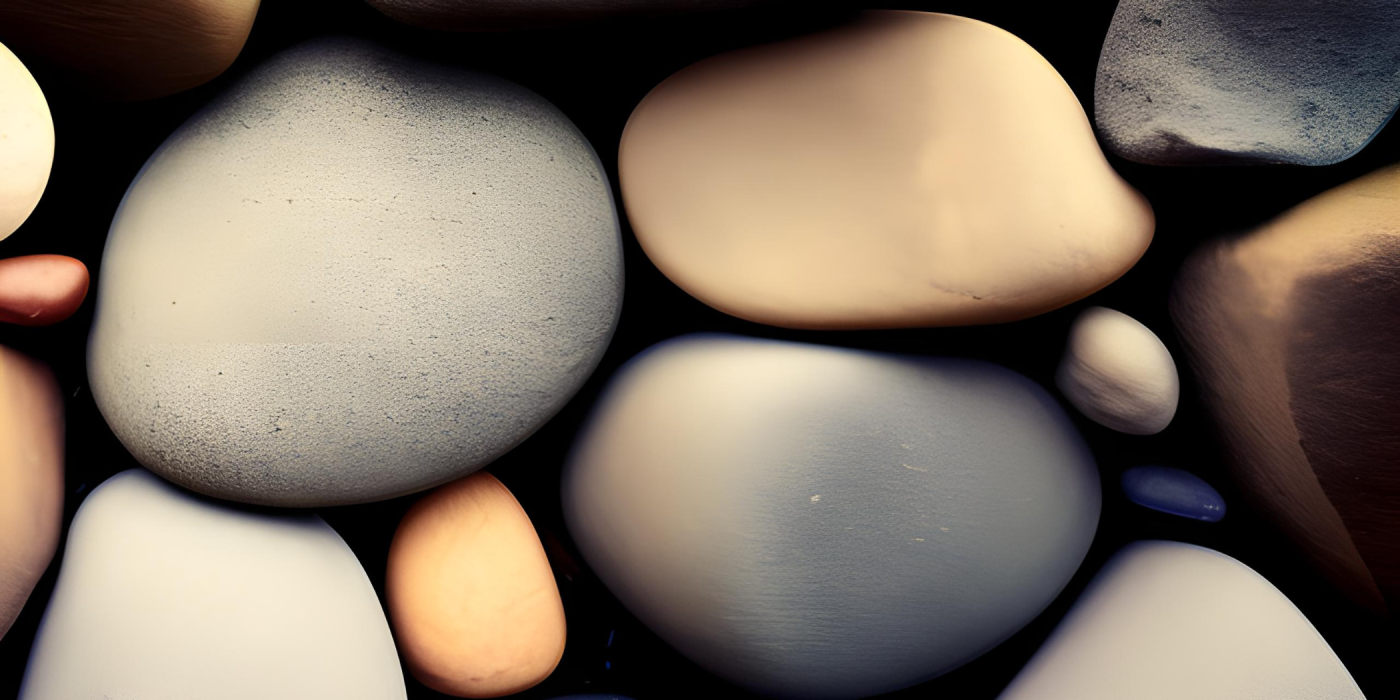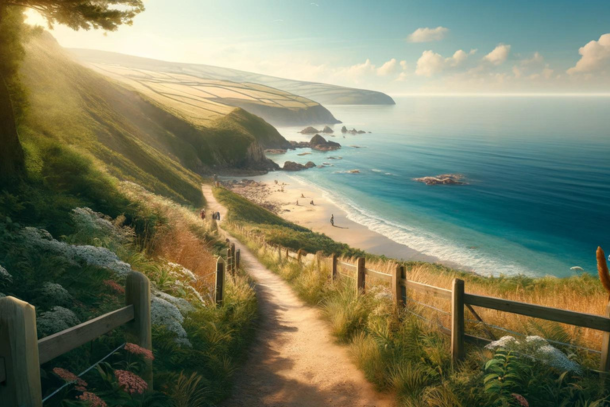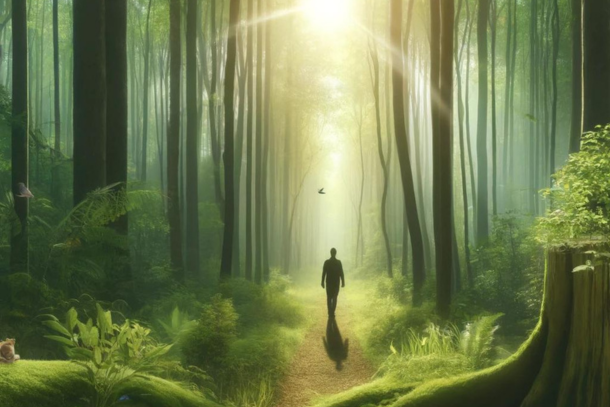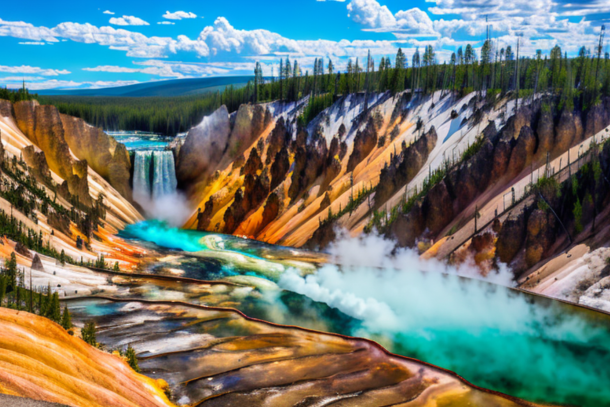Unravelling Nature's Secrets: A Geologist's Guide to Nature Walks

Our planet has a rich tapestry of history, secrets woven into every rock and mineral. Geology, the study of Earth's solid materials, provides us with the unique tools to decode these stories. From the towering peaks of the Highlands to the white cliffs of Dover, the UK's varied landscapes are a testament to the dynamic processes of our planet.
The Allure of Geology
Every rock has a tale to tell, a journey that it has undergone. Geological studies have often illuminated these tales, shedding light on processes that span millions of years.
Why Geology Matters
Geology is not just about rocks and minerals; it's a window into Earth's past. By understanding geological formations, we gain insights into the various climatic, tectonic, and biological events that have shaped our world.
The Romance of Rocks
There's an undeniable charm in holding a piece of rock and imagining its journey through time. Whether it's a sparkling piece of quartz or a humble piece of slate, each rock carries within it the essence of a time gone by.
Incorporating Geology into Nature Walks
While the academic study of geology can be complex, the joys of simple geological observation are accessible to all. A nature walk offers the perfect setting for such observations.
The Simplicity of Observation
You don't need advanced equipment or a degree to appreciate the geology around you. Merely walking through a landscape, noticing the variations in the rocks and terrain, can provide a rich geological experience.
Geology as a Companion
The next time you head out for a stroll in the countryside, take a moment to look down. The rocks beneath your feet, the pebbles in the stream, and even the soil have stories waiting to be discovered.
The Basics of Geology: A Quick Primer
Geology is a captivating branch of science that delves deep into the very essence of our planet. From the towering cliffs of Dover to the rugged Scottish Highlands, the British landscape offers a rich tapestry of geological wonders. As we begin our journey, let's familiarise ourselves with some fundamental concepts.
Definition of Geology
Geology is the study of the Earth's solid materials, including its rocks, minerals, and the processes that shape the Earth over time. This discipline seeks to understand the Earth's history and how it has transformed – and continues to do so – over millennia.
Rocks, Minerals, and Fossils
- Rocks: Solid, naturally occurring substances made up of one or more minerals.
- Minerals: Natural, inorganic substances with a definitive chemical composition and crystalline structure.
- Fossils: Remnants or impressions of prehistoric organisms preserved in sedimentary rocks.
The Rock Cycle
Our planet's crust is dynamic, constantly reshaping and reforming. This cyclical process is known as the rock cycle.
Types of Rocks
- Igneous Rocks: Formed from the cooling and solidification of molten lava or magma. Examples include granite and basalt.
- Sedimentary Rocks: Created over time from layers of compressed sediment. Think of limestone or sandstone.
- Metamorphic Rocks: Born from the transformation of existing rock types under heat and pressure. Examples are slate and marble.
An Introduction to Minerals
Minerals are the building blocks of rocks. In the UK, we find a diverse array of minerals, each with its unique properties. Classifying minerals involves looking at attributes like hardness, lustre, and colour. Quartz, for instance, is a mineral renowned for its hardness and crystal-clear appearance. Whether you're on a beach in Cornwall or hiking in Wales, you're bound to stumble upon fascinating mineral specimens.
Preparing for a Geological Nature Walk
A nature walk with a geological focus not only offers the serenity of the outdoors but provides a unique lens through which one can appreciate the very foundation of our Earth. However, to get the most out of such a venture, it's imperative to come prepared. Here's a guide to help you set out on your explorative journey.
Tools for the Expedition
In order to observe and document your findings effectively, some basic tools are indispensable:
- Magnifying glass: Vital for a closer look at fine details of rocks, minerals, and potential fossils.
- Geologist's hammer: Perfect for gently breaking apart rocks to inspect their inner structures.
- Field guidebook: A quick reference to identify and learn about your discoveries.
- Notebook: To jot down observations, locations, and any peculiarities you might encounter.
- Pencil: Preferably a mechanical one, to avoid the hassle of sharpening.
Safety First: Precautions to Heed
Nature walks are generally tranquil, but when rocks are involved, one must tread with caution:
- Suitable footwear: Opt for sturdy boots with a good grip, particularly if you'll be navigating rocky terrains.
- Rock-breaking caution: Always ensure you're in a safe stance and wearing protective eyewear when using your geologist's hammer.
- Respect for nature: Avoid disrupting local wildlife and always leave habitats as you found them. Remember, we're visitors in their home.
Choosing the Ideal Location
The British Isles are replete with geological wonders. Before heading out, conduct some research to pinpoint local geological hotspots or regions renowned for their unique rock formations, minerals, or fossil-rich areas. Consulting with local geological societies can also provide invaluable insights and recommendations.
Equipped with the right tools, safety knowledge, and a promising location, you're all set to embark on a captivating geological nature walk. Safe travels!
Observing Rocks and Minerals
When embarking on a nature walk in the UK, one of the most enriching activities is to observe and identify the various rocks and minerals strewn across our landscape. The British Isles, with their rich geological history, offer a plethora of opportunities for the curious geologist and amateur alike.
How to Identify Common Rocks
The key to identifying rocks lies in observing certain characteristics:
Texture
The feel and appearance of a rock’s surface can give away a lot. For instance, a rough, grainy texture may suggest a sandstone, whilst a smoother texture might indicate slate.
Colour
While colour alone can be misleading due to weathering, it's a starting point. Red or brown hues can often indicate the presence of iron, while a green tint might suggest copper.
Grain Size
This refers to the size of individual particles or crystals in the rock. Coarse grains are easily visible, like in granite, whereas fine-grained rocks like shale might require closer inspection.
Composition
By examining the minerals present, one can discern the type of rock. For example, the presence of quartz, feldspar, and mica usually denotes granite.
Distinguishing Types of Minerals
While rocks are aggregates of minerals, understanding minerals themselves is crucial:
Hardness
This tests a mineral's resistance to scratching. The Mohs scale, ranging from talc (softest) to diamond (hardest), is a standard measure.
Streak
By rubbing a mineral on a porcelain plate, the colour of its streak can help in identification.
Lustre
This relates to how a mineral reflects light. It could be metallic, glassy, or even pearly.
Cleavage
This is the tendency of a mineral to break along flat planes. Minerals like mica have excellent cleavage and can be split into thin sheets.
Interesting Geological Formations
Britain’s landscapes are adorned with fascinating geological formations:
Fault Lines
These are fractures in the Earth's crust where significant movement has occurred. They tell tales of tectonic activities from ages past.
Rock Layers or Strata
Observing different layers of rock can give insights into the chronological sequence of events, like sediment deposition or volcanic eruptions.
Mineral Veins
Often found in cracks or cavities, these are concentrations of minerals, a testament to the dynamic processes beneath our feet.
In conclusion, with a keen eye and a touch of knowledge, the British countryside transforms into an open geological book, waiting to be read.
The Hunt for Fossils
Delving into the ancient history of our planet, fossils provide us with invaluable insights into bygone eras. This section seeks to guide you on the hunt for fossils during your nature walk, emphasising their significance and suggesting ways to discover and appreciate them while respecting the environment.
Understanding Fossilisation
The process of fossilisation is a remarkable one. Over millions of years, organic materials get trapped in layers of sediment and, through a combination of pressure, chemical processes, and time, transform into a fossil. These fossils become records of the creatures and plants that once roamed our lands and seas, serving as pivotal markers in the geological timeline.
Spotting Fossils on Your Walk
Spotting fossils during a walk requires a keen eye and a bit of background knowledge:
- Sedimentary Rocks: These are your best bet for finding fossils. Comprising layers of compacted sediment, they often hold the remnants of ancient organisms.
- Shapes and Patterns: Familiarise yourself with common fossil shapes – spiral ammonites, feathery fern patterns, or the distinctive shapes of trilobites. These can often stand out from the regular patterns of the rock.
Etiquette in Fossil Hunting
While the thrill of discovery is exhilarating, it's essential to approach fossil hunting with respect and consideration:
- Protected Sites: In the UK, many sites are designated as Sites of Special Scientific Interest (SSSIs) due to their geological or palaeontological significance. Always ensure you're not removing fossils from such protected areas.
- Document, Don't Remove: Instead of removing fossils, especially if you're uncertain about the rules of the area, it's a good practice to photograph your finds. Capture the fossil in situ, noting its size, the rock type, and any distinct features.
- Note Down Locations: Use a notebook or a digital device to mark down the exact location of your find. This can be invaluable for personal records or if you decide to share your discovery with geological societies or experts.
By following these guidelines, you ensure that your fossil hunting experience is not only rewarding but also sustainable and respectful to the environment and scientific community.
Documenting and Sharing Your Discoveries
Engaging in a geology-themed nature walk not only provides personal enrichment but also offers an opportunity to contribute to broader geological knowledge. Here's a guide on how to effectively document and share your discoveries.
Keeping a Geological Journal
Starting a dedicated geological journal can be an enlightening experience. It offers a systematic way to record your observations and findings.
Recording Observations
Detail the location, time, and weather conditions during your excursion. This provides context to your discoveries and can be invaluable for understanding the geological processes at play.
Sketches and Drawings
Even if you're no Da Vinci, sketching the specimens or geological formations can provide a visual record that complements written notes. Over time, you'll find that your drawing skills improve, providing more accurate representations.
Photographs
With the convenience of mobile phones, taking photographs has never been easier. Capture various angles of the rocks, minerals, or fossils you come across. Remember, lighting plays a crucial role, so choose the best time of day for your snapshots.
The Value of Documentation
Your personal notes are not just for your benefit. Documenting these excursions aids in personal growth, acting as a reflection of your learning journey. Moreover, these records can contribute to local knowledge, helping scientists and enthusiasts in understanding regional geological variations.
Engaging with the Community
Local Geological Societies
Most regions in the UK have dedicated geological societies. These groups often hold meetings, field trips, and workshops. Sharing your findings with them can lead to interesting discussions and further learning.
Online Communities
In today's digital age, numerous online forums and groups cater to geology enthusiasts. Platforms like the Geological Society of London's website provide a space for budding geologists to discuss and share their findings.
Remember, geology is as much about community as it is about the Earth. Sharing and discussing your discoveries enriches not only your experience but also the knowledge of the entire community.
Further Learning and Exploration
Unearthing the depths of geology is akin to a thrilling treasure hunt, only with the entire Earth as your map. For those entranced by the mysteries lying beneath our feet, the UK offers an abundance of resources and opportunities to delve deeper into this fascinating subject.
Educational Opportunities
Courses
The UK boasts several reputable institutions that offer courses in geology. Both universities and community colleges provide comprehensive programmes for enthusiasts ranging from beginners to those seeking advanced degrees. Many of these institutions also offer online modules for those who prefer flexible learning.
Books
There's a rich trove of literature dedicated to geology, penned by both British and international authors. A couple of quintessential British reads are:
- "The Hidden Landscape" by Richard Fortey
- "The Geology of Britain: An Introduction" by Peter Toghill
These books provide invaluable insights into the geology specific to the UK.
Community Involvement
Local Geology Clubs and Societies
Across the UK, local geology clubs and societies frequently organise events, guided walks, and informative talks. These organisations, such as The Geological Society of London, not only cater to seasoned geologists but also warmly welcome novices eager to learn.
Museums and Exhibitions
For a hands-on experience, nothing beats visiting a geological museum or exhibition. The Natural History Museum in London, for instance, has an expansive collection of minerals, rocks, and fossils. Such venues offer interactive displays and expert-led tours, giving visitors a tangible connection to the Earth's vast history.
In conclusion, the UK's geological realm is rich and varied. Whether through formal education, community involvement, or museum visits, there are myriad ways to immerse oneself in the wonders of geology.
Conclusion
Taking a moment to reflect upon our walks amidst nature, it's undeniable that there's a unique charm and intrigue when we begin to view the surroundings through a geologist's eye. Every stone underfoot, the jagged edges of a cliff, or the smooth surfaces of riverbed pebbles, all tell tales of Earth's captivating past.
The Magic of Geology
The wonderment we feel when observing the natural world intensifies manifold when we delve into its geological secrets. From understanding the origins of a simple rock to uncovering the mystery behind a prehistoric fossil, geology provides an avenue to travel back in time, albeit without a time machine. Every rock formation, every mineral sparkle, every fossilised imprint is like a page from our planet's grand autobiography.
An Invitation to Exploration
If this guide has stirred a flicker of interest, imagine the blaze of enthusiasm a real-life geological expedition can ignite! Whether it's your backyard, local park, or a coastal path, treasures await your keen eyes. We wholeheartedly encourage you to set forth on your very own geological journey. Equip yourself with a bit of knowledge, a sprinkle of curiosity, and a hearty dash of passion.
A Collective Endeavour
Your individual experiences and discoveries, however small or significant, can contribute immensely to the broader understanding of our planet. By sharing, discussing, and learning, we're not just enriching our knowledge but also fostering a community deeply rooted in appreciation for Earth's myriad wonders.
Related to this article are the following:
- Discovering Tranquillity: A Guide to Forest Bathing
- Top 10 Nature Walks in the UK for Ultimate Relaxation
- A Breath of Fresh Air: Nature Walks and Mental Health
- Embracing the Great Outdoors: A Comprehensive Guide to Nature Walks, Hiking, and Camping
- Nature Walks: A Guide to Taking a Walk Through Nature
I do hope you have enjoyed this article and hope that you will subscribe to my newsletter so you can get the latest information about all things naturally relaxing.
Stay in touch, join the Naturally Relaxing Newsletter
Newsletter Signup
Post Your Comments
or post as a guest
Be the first to comment.
Latest articles in Nature

Exploring the UK’s Most Serene Coastal Trails

The Healing Power of Nature: Forest Bathing Explained

Sustainable Gardening: Tips for Growing Your Own Herbs

The Yellowstone Supervolcano: A Sleeping Giant

The Lost City of Atlantis: A Geological Mystery






